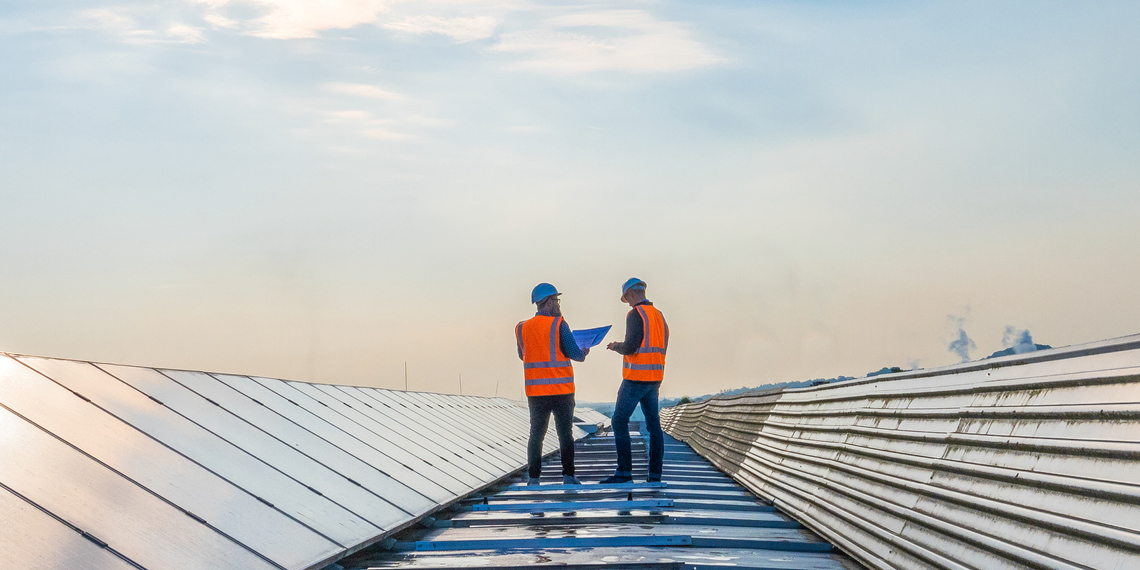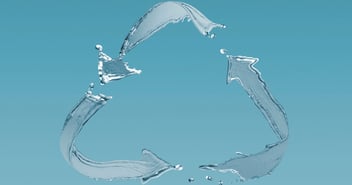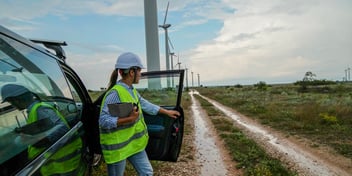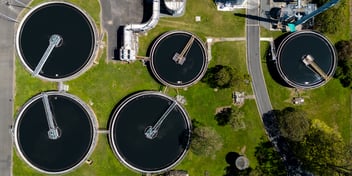How the water sector is working to achieve net zero

While the water community has made significant headway reducing carbon emissions, the path to net zero remains fraught with complex long-term challenges. Decisions made now will not only determine how the sector meets its initial commitments but also its capacity to effectively address future obligations.
Getting the balance right is critical, and – against a backdrop of intensifying climate change – time is of the essence.
There are three classes of greenhouse gas emissions: Scope 1, which refers to direct emissions from controlled sources; Scope 2, the indirect emissions generated from purchased energy; and Scope 3, other indirect emissions occurring in an organisation’s value chain.
The water sector has a sizeable emissions profile, demanding a multifaceted mitigation approach. Beyond technical considerations, utilities need to weigh up a range of economic factors to meet emissions reduction goals, while adhering to regulatory frameworks governing the supply of water services.
The sector has broadly made progress mitigating Scope 2 emissions via the adoption of renewable energy technologies, with energy efficiency and demand-side flexibility paving the way for increased renewables integration.
Significant challenges remain, however, particularly regarding Scope 1 wastewater treatment emissions.
Aurecon Technical Director, Water, John Poon said the sector has the capacity to substantially contribute to emissions reduction and has a key role to play in achieving broader net zero targets.
“Currently, 2–3% of carbon emissions can be attributed to the water sector. That’s a pretty significant amount from one sector,” he said.
While the water sector is characterised by using large amounts of grid electricity, the level of Scope 1 emissions in treatment processes is not insignificant.
“We generate methane, which we don’t always capture and use, and nitrous oxide emissions as well, so the sector obviously has some big challenges in that area,” Poon said.
Legacy infrastructure
The water sector is encumbered by legacy infrastructure and technologies developed in an era when carbon constraints and resource scarcity were not primary considerations.
Poon emphasised the need to not only investigate methods of making current infrastructure more efficient, but also to explore transitioning from traditional centralised models that prioritise incremental development.
“We also have other things going on around economic regulation. Does the economic regulator have room to allow utilities to pay for what we need to do around sustainability and decarbonisation?” Poon asked.
“The economic regulations can sometimes be premised on a degree of predictability, but what we’re finding now is that adding on more of the same stuff doesn’t always get us on the pathway we need to be on. Now is the time to be more innovative and adapt our ways.”
Aurecon Group Director, Sustainability, Paul Gleeson said that, despite the absence of a true price on emissions, momentum is building as states and territories commit to net zero by 2050.
Factors such as water being an essential service, the fragility of the resource and challenges like climate change will drive the water sector to focus on sustainability.
“Whatever the driver is, there’s no question there are lots of projects being directed towards decarbonisation ahead of any price signal on emissions,” he said.
Gleeson also pointed to an evolving regulatory environment, in which a host of additional drivers are emerging, with utilities required to meet various climate and sustainability requirements.
“We see utilities and government agencies now starting to respond to things like the Task Force on Climate-related Financial Disclosures, and the incoming sustainability reporting standards through the International Financial Reporting Standards Foundation,” he said.
“A lot of agencies are using those frameworks around sustainability reporting. Once you have to report and disclose, that drives action.”
A leading role
Professor John Thwaites AM, Chair of Melbourne Water and ClimateWorks Australia, said the water sector should aim for net zero well before 2050, with the view of taking a leading role in decarbonisation.
Melbourne Water and other water corporations in Victoria’s capital have set a 2030 net zero target, with the utility presiding over a growing portfolio of integrated renewable energy sources.
“The water sector has more opportunities for reducing emissions than some other sectors, so it has a responsibility to move faster,” Thwaites said.
“For Melbourne Water, that means all our energy being renewable, and we’re targeting to achieve that by 2025.”
For most water corporations that should be easily achievable, with the costs of renewable energy now on a par with that of fossil fuel energy, Thwaites added.
While progress in mitigating Scope 2 emissions continues to be made, he said the water sector needs to concurrently address its “biggest challenge” – reducing Scope 1 wastewater treatment emissions.
Melbourne Water – which harnesses captured biogas to generate electricity at two major treatment plants – is undertaking ongoing measurement and mitigation research, with Thwaites observing the introduction of new technologies is a long-term proposition.
As this research continues, Melbourne Water will need to purchase offsets to achieve net zero by 2030, while it addresses another element of its Scope 1 emissions profile by transitioning to an electric vehicle fleet.
Even though the utility has been able to purchase substantial numbers of passenger vehicles, Thwaites said securing commercial vehicles remains a challenge.
“Until we get a better system in Australia to attract supply of electric vehicles, water corporations are going to be handicapped in the transition to a zero-emissions transport fleet,” he said.
“We need the Federal Government to step up with vehicle emissions standards, as Australia stands out as being behind almost every other advanced country in our standards.”
Filling the gaps
Matt Lyon, WSP Senior Engineer, Water, said that while utilities around the country are at different points on the path to net zero, Scope 2 emissions reduction has broadly been an initial focus.
Initiatives such as solar photovoltaic integration across utility assets, the purchase of renewable power from the grid, energy efficiency and wastewater biogas power generation have all been used to reduce both Scope 1 and 2 emissions.
“Historically, the industry has focused on these higher payback emissions reduction initiatives,” he said.
“This is partially because utilities in jurisdictions without legislated emissions reduction targets have faced difficulty getting lower payback initiatives approved by economic regulators without completing customer willingness-to-pay studies.”
While mitigating methane emissions via biogas capture is an established process, Lyon said Scope 1 emissions are a challenge.
“There’s ongoing research to understand whether the emissions factors being used to estimate emissions, such as nitrous oxide, correlate to the actual emissions of plants,” he said.
As Scope 1 emissions research progresses, in combination with their mitigation of Scope 1 emissions, Lyon said this presents a clear path to net zero.
While there is less of a focus on reducing Scope 3 emissions – which are not reported under the National Greenhouse and Energy Reporting scheme – there is potential for change, with some upstream companies committing to emissions reduction.
“If these reductions occur, this would see reduced emissions from the mining and refinement of raw materials, in equipment manufacturing and in the construction of infrastructure,” Lyon said.
“If the water industry were to also target reducing Scope 3 emissions, it could accelerate wider industry emission reductions and have a larger overall impact on mitigating climate change.”
Distributed systems
Peter Newman AO, Curtin University Professor of Sustainability, highlights the importance of transitioning from a centralised outlook in navigating the path to net zero, emphasising the role increasingly distributed systems can play.
Newman points to the Western Australian power sector, which under its Distributed Energy Resources Roadmap has set about integrating smaller-scale resources that generate or store electricity, including rooftop solar panels and batteries.
“We have had to go for a distributed power system because we don’t have the big grid they have in the eastern states, so we are rapidly moving towards distributed as the only option,” he said.
“That model will translate into water. We’ve got a big grid over here and scaling that back is going to be on the agenda, which means that parts of it will eventually not be rebuilt.”
Deployment of integrated small-scale systems that remain on both the power and water grids, but are progressively less dependent on centralised service provision, should begin now, Newman said.
Water-sensitive urban development, for example, may encompass a range of approaches, including stormwater and rainwater harvesting, local desalination of groundwater powered by solar energy, and water efficient appliances.
“You can see how that fits into the wider grid, and how quickly it could be taken up as a way of solving problems, rather than expensive big desalination and wastewater treatment systems that go with the big groundwater replenishment schemes,” he said.
“All of that can happen, but it’s a matter of slowing it down on the big scale and accelerating distributed systems so that they can crossover at some point.”
Newman would like to see local communities provided the opportunity to demonstrate how these types of distributed net zero systems work.
“It’s time for government to step in,” he said. “We need partnerships not paternalism, and that approach depends on programs that clearly show a short- and long-term goal of net zero.”
First published as ‘Reaching Net Zero’ in Current, May 2022.



